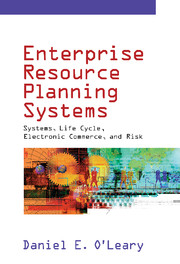3 - ERP Systems Background
from PART TWO - ERP SYSTEMS
Published online by Cambridge University Press: 05 June 2012
Summary
The purpose of this chapter is to provide some basic background information about ERP systems. As a result, we will address a number of specific questions.
What is an ERP system?
Who are the ERP vendors?
What are ERP “partners”?
What are some sample ERP modules?
What does it mean to talk of “best of breed”?
What are “add-ons” to ERP?
What are ERP MAPs?
How do ERP systems work?
Since SAP is the dominant ERP system, I will use it to illustrate some of the general ERP concepts.
What Is an ERP System?
In this book, ERP systems are computer-based systems designed to process an organization's transactions and facilitate integrated and real-time planning, production, and customer response. In particular, ERP systems will be assumed to have the following characteristics.
ERP systems are packaged software designed for a client server environment, whether traditional or web-based.
ERP systems integrate the majority of a business's processes.
ERP systems process a large majority of an organization's transactions.
ERP systems use an enterprise-wide database that typically stores each piece of data once.
ERP systems allow access to the data in real time.
In some cases, ERP allows an integration of transaction processing and planning activities (e.g., production planning).
- Type
- Chapter
- Information
- Enterprise Resource Planning SystemsSystems, Life Cycle, Electronic Commerce, and Risk, pp. 27 - 48Publisher: Cambridge University PressPrint publication year: 2000

